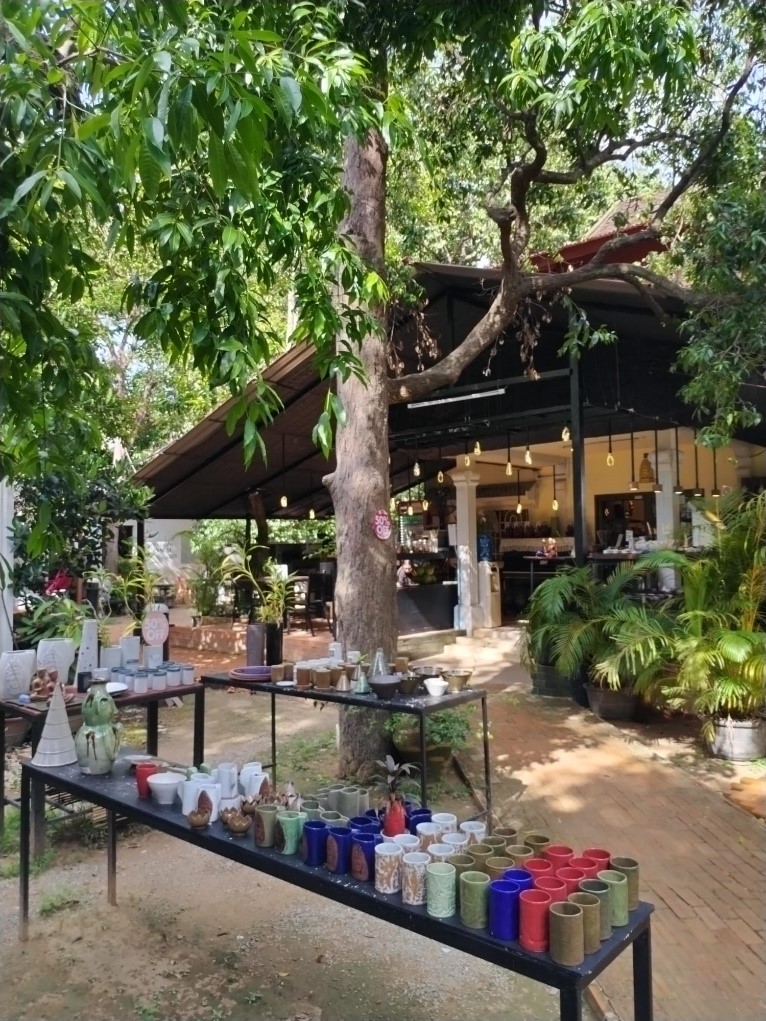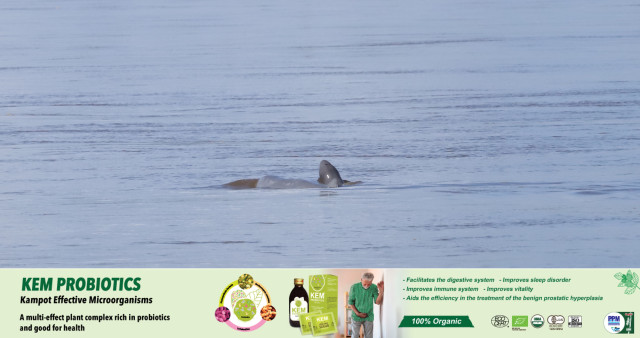Khmer Ceramics: Keeping its Ancestral Style and Techniques in the 21st Century
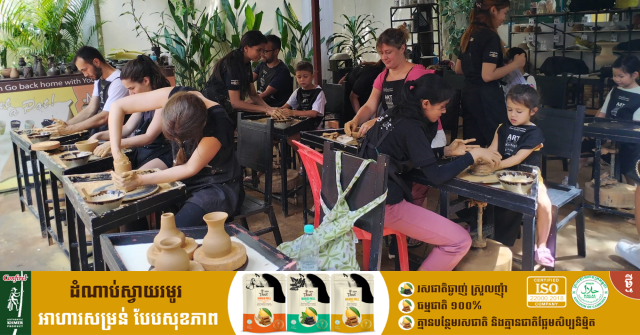
- By Nicolò Tissier
- September 16, 2023 8:00 PM
SIEM REAP — What sets Khmer ceramics apart is the Kbach, said Serge Rega, a Belgian who has been living in Cambodia since 1998.
As he explained, Kbach is the traditional decorations engraved on the surface of the pieces that reflect Cambodian culture and heritage.
In 2006, Rega founded the Khmer Ceramics Fine Arts Center , a family-owned social enterprise based in Siem Reap City that, as he explained, aims to benefit an entire community by teaching and by making contemporary ceramic in the Khmer style.

When he arrived in the country, Rega was already interested in ceramics. He started to make some himself, and then, Cambodians around him became interested and joined him in the activity. Thus, the centre was born.
People at the centre have learned by directly doing the work, Rega said. “Everybody learns the job right in the field” he said.
For the Kbach—the pottery’s traditional decorations—the centre draws inspiration from the ornaments of the temples at Angkor to decorate its pieces, Rega said.
Strictly speaking, techniques for ceramics are similar to those for pottery, he said. But with some technical differences. For example, ceramists making stoneware fire their ceramic pieces in the kiln at very high temperature, around 1,300 degrees Celsius, Rega explained.
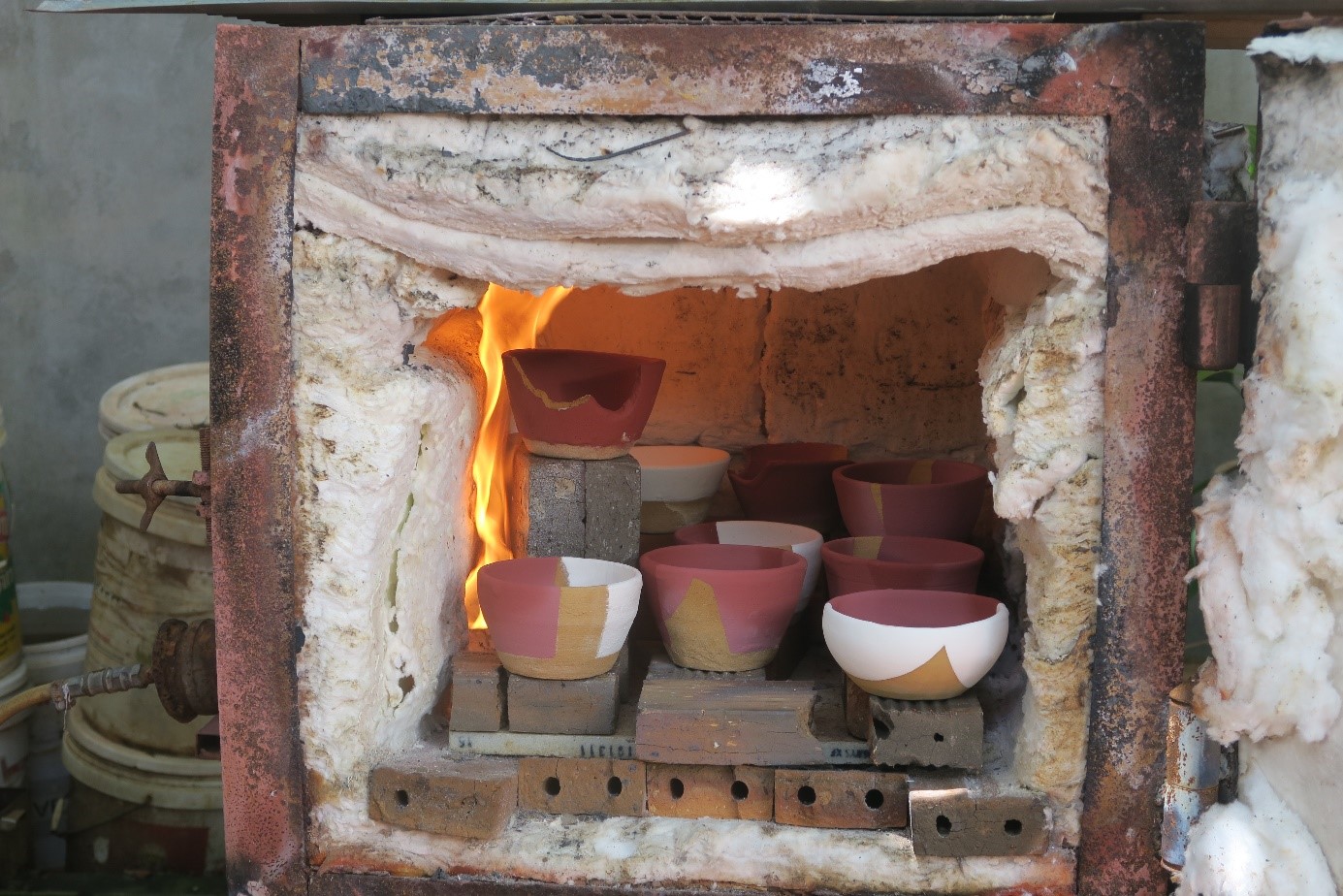
They previously used wood-fired kilns, but now have changed—at least temporarily—to gas kilns for practical reasons.
When it opened in 2006 and throughout 2007, the centre was called National Centre of Khmer Ceramic Revival. At the time, the centre was involved in the academic world through conferences, Rega said. But the centre progressively evolved in a different direction, focusing on ceramic production and developing a big exportation network with the capacity to ship parcels worldwide, he said.
But then came the COVID-19 pandemic in early 2020, which caused a clear stop of all economic activities in Siem Reap city.
The Khmer Ceramic Centre tried to stay open as much as possible, but no visitor came during the pandemic, Rega said. That period was particularly challenging because they had to move to a new facility as it was not possible to renew their lease, which has been a shame because their old one was bigger than the current facility, he added.
While the centre has pulled through the pandemic, its facility is smaller, the production reduced and so is the number of employees whose number has dropped from 30 to 20, Rega said.
Pottery classes are now the centre’s main economic activity. Tourists from all parts of the world as well as Cambodians attend those classes.
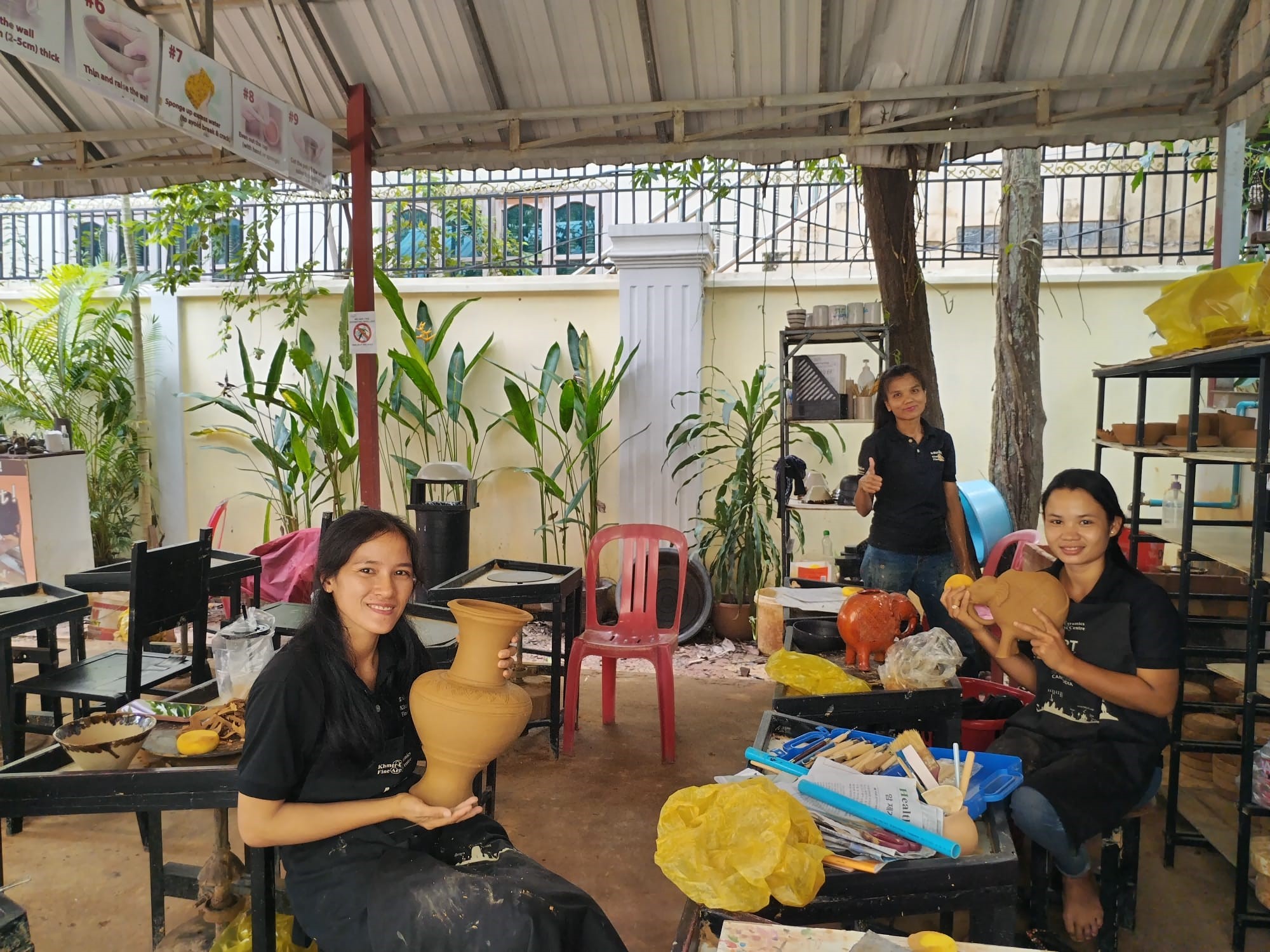
While the income generated through them supports the centre, the classes are not just about money, Rega stressed. The centre first aims to share its knowledge and art through them: It is the initial goal, Rega said. “We want to offer tourists and visitors a moment where they can experience something sincere, to share a moment with Cambodian people, outside a purely commercial relationship.”
The lessons are currently given by three deaf-mute young women. This attracts curiosity and is an integral part of the success of the workshop, Rega explained.
At first, the centre had difficulty with their Cambodian teachers attempting to communicate the information in English during classes despite the fact that many young Cambodian members of the centre were learning English in school or in their spear time, he said.

Then one day, a deaf man came to the centre, learned about pottery and started to work there. Then other deaf people joined him. The centre’s staff realized after a while that they were particularly efficient at teaching tourists as they were already used to communicate without words, Rega said. Pottery being a manual activity, communication by hands replaced everything else with success, he said.
As deaf-mute people too often struggle to find proper work, this job helps them feel valued, Rega said. “We are all in the same boat,” he said.
The Khmer Ceramics and Fine Arts Centre, which is a social enterprise—a business that puts portion of its profits back into a social or environmental mission—now aims to secure the activity by making it permanent and lasting, Rega said. This is why the centre is looking for a facility with a long-term lease. Even if the current place is a little small, the centre would be happy to remain where it is with a long-term lease as it is a great location on the north part of the riverside in Siem Reap City, he said.
